compromise n.
A compromise is a situation in which people accept something slightly different from what they really want, because of circumstances or because they are considering the wishes of other people. 妥协, 折中方法
|
It has been claimed that the British love of compromise is the result of the country’s physical geography. This may or may not be true, but it is certainly true that the land and climate in Britain have a notable lack of extremes.1 Britain has mountains, but none of them are very high; it also has flat land, but you cannot travel far without encountering hills; it has no really big rivers; it doesn’t usually get very cold in the winter or very hot in the summer; it has no active volcanoes, and an earth tremor which does no more than rattle teacups in a few houses is reported in the national news media.
Climate
 The climate in Britain is more or less the same as that of the north-western part of the European mainland. The popular belief that it rains all the time in Britain is simply not true. The image of a wet, foggy land was created two thousand years ago by the invading Romans and was perpetuated in the twentieth century by Hollywood. In fact, London gets no more rain in a year than most other major European cities, and less than some2
The climate in Britain is more or less the same as that of the north-western part of the European mainland. The popular belief that it rains all the time in Britain is simply not true. The image of a wet, foggy land was created two thousand years ago by the invading Romans and was perpetuated in the twentieth century by Hollywood. In fact, London gets no more rain in a year than most other major European cities, and less than some2
perpetuate v.
If someone or something perpetuates a situation, system, or belief, especially a bad one, they cause it to continue. 使永存;使人记住不忘
|
The amount of rain that falls on a town in Britain depends on where it is. Generally speaking, the further west you go, the more rain you get. The mild winters mean that snow is a regular feature of the higher areas only. Occasionally, a whole winter goes by in lower-lying parts without any snow at all. The winters are in general slightly coder in the east of the country than they are in the west, while in summer the south is warmer and sunnier than the north. (Climate change)
Why has Britain’s climate got such a bad reputation? Perhaps it is for the same reason that British people always seem to be talking about the weather. This is its changeability. There is a saying that Britain doesn’t have a climate, it only has weather. It may not rain very much altogether, but you can never be sure of a dry day; there can be cool (even cold) days in July and some quite warm days in January3
thermometer n.
A thermometer is an instrument for measuring temperature. It usually consists of a narrow glass tube containing a thin column of a liquid which rises and falls as the temperature rises and falls. 温度计, 体温表
|
The lack of extremes is the reason why, on the few occasions when it gets genuinely hot or freezing cold, the country seems to be totally unprepared for it. A bit of snow or a few days of frost and the trains stop working and the roads are blocked; if the thermometer goes above 80℉ (27℃), people behave as if they were in the Sahara and the temperature makes front-page headlines. These things happen so rarely that it is not worth organizing life to be ready for them.
grandeur n.
If something such as a building or a piece of scenery has grandeur, it is impressive because of its size, its beauty, or its power. 宏伟, 壮观, 富丽堂皇
|
 Top
Top
Land and settlement
 Britain has neither towering mountain rages nor impressively large rivers, plains or forests. But this does not mean that its landscape is boring. What it lacks in grandeur it makes up for in variety. The scenery changes noticeably over quite short distances4. It has often been remarked that a journey of 100 miles (160 kilometres) can, as a result, seem twice as far. Overall, the south and east of the country are comparatively low-lying, consisting of either flat plains or gently rolling hills. Mountainous areas are found only in the north and west, although these regions also have flat areas.
Britain has neither towering mountain rages nor impressively large rivers, plains or forests. But this does not mean that its landscape is boring. What it lacks in grandeur it makes up for in variety. The scenery changes noticeably over quite short distances4. It has often been remarked that a journey of 100 miles (160 kilometres) can, as a result, seem twice as far. Overall, the south and east of the country are comparatively low-lying, consisting of either flat plains or gently rolling hills. Mountainous areas are found only in the north and west, although these regions also have flat areas.
enclosure n.
An enclosure is an area of land that is surrounded by a wall or fence and that is used for a particular purpose. 圈占地, 圈用地
|
Human influence has been extensive. The forest that once covered the land have largely disappeared. Britain has a greater proportion of grassland than any other country in Europe except Ireland. One distinctive human influence, especially common in southern England, is the enclosure of fields with hedgerows. This feature increases the impression of variety. Although many hedgerows disappeared in the second half of the twentieth century (farmers dug them up to increase the size of their fields and become more efficient), there are still enough of them to support a variety of bird life.
Much of the land is used for human habitation. This is not just because Britain is densely populated in most areas (Britain and Ireland where people live). Partly because of their habitual concern for privacy and their love of the countryside (see chapter 5), the English and the Welsh don’t like living in blocks of flats in city centers and the proportion of people who do so is l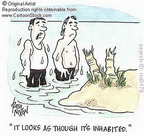 ower than in continental European countries. As a result, cities in England and Wales have, wherever possible, been built outwards rather than upwards (although this is not so much the case with Scottish cities). For example, the London area has about three times the population of the Athens area but it occupies about ten times the amount of land.
ower than in continental European countries. As a result, cities in England and Wales have, wherever possible, been built outwards rather than upwards (although this is not so much the case with Scottish cities). For example, the London area has about three times the population of the Athens area but it occupies about ten times the amount of land.
However, because most people (almost 80%) live in towns or cities rather than in villages or in the countryside, this habit of building outwards does not mean that you see buildings wherever you go in Britain. There are areas of completely open countryside everywhere and some of the mountainous areas remain virtually untouched.
 Top
Top
The environment and pollution
 It was in Britain that the word ‘smog’ (a mixture of smoke and fog) was first used. As the world’s first industrialized country, its cities were the first to suffer this atmospheric condition. In the nineteenth century, London’s ‘pea-soupers’ (thick fogs) became famous through descriptions of them in the works of Charles Dickens and in the Sherlock Holmes stories. The situation in London reached its worst point in 1952. At the end of that year a particularly bad smog, which lasted for several days, was estimated to have caused between 4,000 and 8,000 deaths.
It was in Britain that the word ‘smog’ (a mixture of smoke and fog) was first used. As the world’s first industrialized country, its cities were the first to suffer this atmospheric condition. In the nineteenth century, London’s ‘pea-soupers’ (thick fogs) became famous through descriptions of them in the works of Charles Dickens and in the Sherlock Holmes stories. The situation in London reached its worst point in 1952. At the end of that year a particularly bad smog, which lasted for several days, was estimated to have caused between 4,000 and 8,000 deaths.
Water pollution was also a problem. In the nineteenth century it was once suggested that the Houses of Parliament should be wrapped in enormous wet sheets to protect those inside from the awful smell of the River Thames. Until the 1960s, the first thing that happened to people who fell into the Thames in London was that they were rushe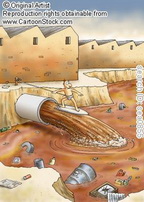 d to hospital to have their stomachs pumped!
d to hospital to have their stomachs pumped!
Then, during the 1960s and 1970s, laws were passed which forbade the heating of homes with open coal fires and which stopped much of the pollution from factories. At one time, a scene of fog in a Hollywood film was all that was necessary to symbolize London. This image is now out of date, and by the end of the 1970s 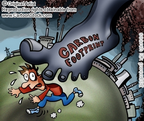 it was said to be possible to catch fish in the Thames outside Parliament. (Britain under attack)
it was said to be possible to catch fish in the Thames outside Parliament. (Britain under attack)
asthma n.
Asthma is a lung condition which causes difficulty in breathing. 〈医〉气喘; 哮喘
|
However, as in the rest of Europe, the great increase in the use of the motor car in the last quarter of the twentieth century caused an increase in a different kind of air pollution. This problem is serious enough for weather forecasts to have an ‘air quality’ section and on some occasions for official advice to be given that certain people (such as asthma sufferers) should not even leave their houses, and that nobody should take any vigorous exercise.
solar adj.
Solar is used to describe things relating to the sun. 太阳的, 日光的
|
tidal adj.
Tidal means relating to or produced by tides. 潮汐的
|
Now that the reduction of greenhouse gases has become a pressing global need, how to provide for Britain’s energy needs and/or reduce its energy consumption has become a national issue, especially as the country’s oil reserves in the North Sea will not last much longer. There is a possibility that new nuclear power stations will be built because they do not emit greenhouse gases. But they are politically unpopular and there is doubt about their environmental friendliness (they do cause some greenhouse gases to be emitted, both in their construction and in the disposal of the waste they create).  Various attempts at using ‘green’ energy sources are being made. One of these is solar power, but for obvious reasons there is a limit to its possibilities in Britain. Others are tidal power and even wave power. The one which has really developed is wind power. Wind farms are now quite a common feature of the British landscape. But they are not universally popular either. Some local people and nature lovers feel strongly that they ruin the countryside — and so local tourist boards are often opposed to then too. One way around this problem is to construct them offshore in the sea, and this too has been done.
Various attempts at using ‘green’ energy sources are being made. One of these is solar power, but for obvious reasons there is a limit to its possibilities in Britain. Others are tidal power and even wave power. The one which has really developed is wind power. Wind farms are now quite a common feature of the British landscape. But they are not universally popular either. Some local people and nature lovers feel strongly that they ruin the countryside — and so local tourist boards are often opposed to then too. One way around this problem is to construct them offshore in the sea, and this too has been done.
 Top
Top
London
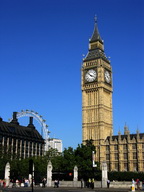 London (the largest city in western Europe) dominates Britain. It is home to the headquarters of all government departments, the country’s parliament, its major legal institutions, and the monarch. It is the country’s business and banking center and the center of its transport network. It contains the headquarters of the national television networks and all the national newspapers. It is about seven times larger than any other city in the country. About a fifth of the total population of the UK lives in the wider London area.
London (the largest city in western Europe) dominates Britain. It is home to the headquarters of all government departments, the country’s parliament, its major legal institutions, and the monarch. It is the country’s business and banking center and the center of its transport network. It contains the headquarters of the national television networks and all the national newspapers. It is about seven times larger than any other city in the country. About a fifth of the total population of the UK lives in the wider London area.
autonomy n.
Autonomy is the control or government of a country, organization, or group by itself rather than by others. 自主,自主权
|
The original walled city of London was quite small. (It is known colloquially today as ‘the square mile’.) It did not contain Parliament or the royal court, 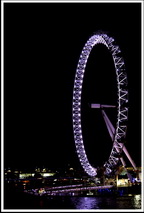 since this would have interfered with the autonomy of the merchants and traders who lived and worked there. It was in Westminster, another ‘city’ outside London’s walls, that these national institutions met. Today, both ‘cities’ are just two areas of central London. The square mile (also known simply as ‘the City’) is home to the country’s main financial organizations. During the daytime, more than a quarter of a million people work there, but fewer than 10,000 people actually live there.
since this would have interfered with the autonomy of the merchants and traders who lived and worked there. It was in Westminster, another ‘city’ outside London’s walls, that these national institutions met. Today, both ‘cities’ are just two areas of central London. The square mile (also known simply as ‘the City’) is home to the country’s main financial organizations. During the daytime, more than a quarter of a million people work there, but fewer than 10,000 people actually live there.
Two other well-known areas of London are the West End and the East End. The former is known for its many theatres, cinemas and expensive shops. The latter is known as the poorer residential area of central London. It is the traditional home of the Cockney and for centuries it has been home to successive waves of immigrant groups. (The better side of town)
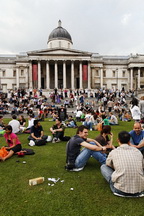 There are many other parts of central London, some of them quite distinctive in character, and central London itself makes up only a very small part of Greater London. In common with many other European cities, the population in the central area decreased in the second half of the twentieth century. The majority of ‘Londoners’ live in its suburbs, millions of them traveling into the centre each day to work. These suburbs cover a vast area of land stretching in all directions. The most recent trend has been an expansion of London to the east, down towards the Thames Estuary.
There are many other parts of central London, some of them quite distinctive in character, and central London itself makes up only a very small part of Greater London. In common with many other European cities, the population in the central area decreased in the second half of the twentieth century. The majority of ‘Londoners’ live in its suburbs, millions of them traveling into the centre each day to work. These suburbs cover a vast area of land stretching in all directions. The most recent trend has been an expansion of London to the east, down towards the Thames Estuary.
cosmopolitan adj.
A cosmopolitan place or society is full of people from many different countries and cultures. 世界性
|
cuisine n.
The cuisine of a country or district is the style of cooking that is characteristic of that place. 菜肴
|
Like many large cities, London is in some ways untypical of the rest of the country in that it is so cosmopolitan. Although all of Britain’s cities have some degree of cultural and racial variety, the variety is by far the greatest in London.  More than 300 languages are spoken there; its restaurants offer cuisine from more than 70 different countries. In fact, nearly a third of the people in London were born outside Britain.
More than 300 languages are spoken there; its restaurants offer cuisine from more than 70 different countries. In fact, nearly a third of the people in London were born outside Britain.
The variety does not stop there. London has most of both the richest and the poorest areas in Britain. Despite this, you have less chance of being the  victim of a crime there than you have in many other British cities. In late 2007, it was voted the most popular city in the world in an on-line poll of international tourists. It is also the most frequent choice for Chinese companies expanding into Europe. This popularity is probably the result of its combination of apparently infinite cultural variety and a long history which has left intact many visible signs of its richness and drama5.
victim of a crime there than you have in many other British cities. In late 2007, it was voted the most popular city in the world in an on-line poll of international tourists. It is also the most frequent choice for Chinese companies expanding into Europe. This popularity is probably the result of its combination of apparently infinite cultural variety and a long history which has left intact many visible signs of its richness and drama5.
 Top
Top
Southern England
The area surrounding the outer suburbs of London has the reputation of being ‘commuter land’. This is the most densely populated area in the UK which does not include a large city, and millions of its inhabitants travel into London to work every day.
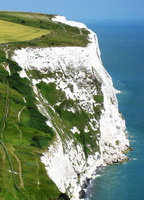 Further out from London the region has more of its own distinctive character. The county of Kent, which you pass through when traveling from Dover or the channel tunnel to London, is known as ‘the garden of England’ because of the many kinds of fruit and vegetables grown there. The Downs, a series of hills in a horseshoe shape to the south of London, are used for sheep farming (though not as intensively as they used to be). The southern side of the Downs reaches the sea in many places and form the white cliffs of the south coast. Many retired people live along this coast. Employment in the south-east of England has always been mainly in trade, the provision of services and light manufacturing. There was never much heavy industry. It therefore did not suffer the slow economic decline that many other parts of England experienced during the twentieth century. (The great wildlife invasion)
Further out from London the region has more of its own distinctive character. The county of Kent, which you pass through when traveling from Dover or the channel tunnel to London, is known as ‘the garden of England’ because of the many kinds of fruit and vegetables grown there. The Downs, a series of hills in a horseshoe shape to the south of London, are used for sheep farming (though not as intensively as they used to be). The southern side of the Downs reaches the sea in many places and form the white cliffs of the south coast. Many retired people live along this coast. Employment in the south-east of England has always been mainly in trade, the provision of services and light manufacturing. There was never much heavy industry. It therefore did not suffer the slow economic decline that many other parts of England experienced during the twentieth century. (The great wildlife invasion)
peninsula n.
A peninsula is a long narrow piece of land which sticks out from a larger piece of land and is almost completely surrounded by water. 半岛
|
The region known as ‘the West Country’ has an attractive image of rural beauty in British people’s minds — notice the use of the word ‘country’ in its name. There is some industry and one large city (Bristol was once Britain’s most important port after London), but farming is more widespread than it is in most other regions.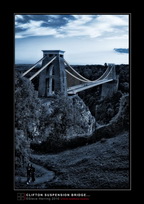 Some parts of the West County are well-known for their dairy produce, such as Devonshire cream, and fruit. The south-west peninsula, with its rocky coast, numerous small bays (once noted for smuggling activities) and wild moorlands such as Exmoor and Dartmoor, is the most popular holiday area in Britain. The winters are so mild in some low-lying parts of Cornwall that it is even possible to grow palm trees, and the tourist industry has coined the phrase ‘the Cornish Riviera’.
Some parts of the West County are well-known for their dairy produce, such as Devonshire cream, and fruit. The south-west peninsula, with its rocky coast, numerous small bays (once noted for smuggling activities) and wild moorlands such as Exmoor and Dartmoor, is the most popular holiday area in Britain. The winters are so mild in some low-lying parts of Cornwall that it is even possible to grow palm trees, and the tourist industry has coined the phrase ‘the Cornish Riviera’.
arable adj.
Arable farming involves growing crops such as wheat and barley rather than keeping animals or growing fruit and vegetables. Arable land is land that is used for arable farming. 适于耕种的
|
criss-cross v.
If two sets of lines or things criss-cross, they cross over each other. 纵横交错
|
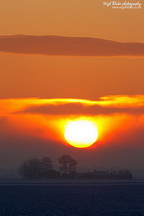 East Anglia, to the north-east of London, is also comparatively rural. It is the only region in Britain where there are large expanses of uniformly flat land. This flatness, together with the comparatively dry climate, has made it the main area in the country for the growing of wheat and other arable crops. Part of this region, the area known as the Fens, has been reclaimed from the sea, and much of it still has a very watery, misty feeling to it. Further east, the Norfolk Broads are criss-crossed by hundreds of waterways, but there are no towns here, so it is a popular area for boating holidays.
East Anglia, to the north-east of London, is also comparatively rural. It is the only region in Britain where there are large expanses of uniformly flat land. This flatness, together with the comparatively dry climate, has made it the main area in the country for the growing of wheat and other arable crops. Part of this region, the area known as the Fens, has been reclaimed from the sea, and much of it still has a very watery, misty feeling to it. Further east, the Norfolk Broads are criss-crossed by hundreds of waterways, but there are no towns here, so it is a popular area for boating holidays.
 Top
Top
The Midlands of England
Birmingham is Britain’s second largest city. During the Industrial Revolution (see chapter 2), Birmingham and the area to its north and west (sometimes known as the Black Country) developed into the country’s major engineering center. 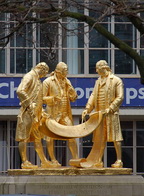 Despite the decline of heavy industry in the twentieth century, factories in the Birmingham area still convert iron and steel into a vast variety of goods.
Despite the decline of heavy industry in the twentieth century, factories in the Birmingham area still convert iron and steel into a vast variety of goods.
There are other industrial areas in the Midlands, notably the towns between the Black Country and Manchester known as The Potteries (famous for producing china such as that made at the factories of Wedgwood, Spode and Minton) and several towns further east such as Derby, Leicester, and Nottingham. On the east coast, Grimsby, once one of the world’s greatest fishing ports, has become the country’s major fish processing center.
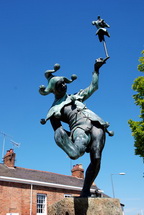 Although the Midlands do not have many positive associations in the minds of British people, tourism has flourished in ‘Shakespeare country’ (centered on Stratford-upon-Avon, Shakespeare’s birthplace), and Nottingham has successfully capitalized on the legend of Robin Hood.
Although the Midlands do not have many positive associations in the minds of British people, tourism has flourished in ‘Shakespeare country’ (centered on Stratford-upon-Avon, Shakespeare’s birthplace), and Nottingham has successfully capitalized on the legend of Robin Hood.
 Top
Top
Northern England
The Pennine mountains run up the middle of northern England like a spine. On either side, the large deposits of coal (used to provide power) and iron ore (used to make machinery) enabled these areas to lead the Industrial Revolution. On the western side, the Manchester area (connected to the port of Liverpool by canal) became, in the nineteenth century, the world’s leading producer of cotton goods; on the eastern side, towns such as Bradford and Leeds became the world’s leading producers of woolen goods.  Many other towns sprang up on both sides of the Pennines at this time, concentrating on certain auxiliary industries or on coal mining. Further south, Sheffield became a center for the production of steel goods. Further north, around Newcastle, shipbuilding was the major industry. (The north-south divide)
Many other towns sprang up on both sides of the Pennines at this time, concentrating on certain auxiliary industries or on coal mining. Further south, Sheffield became a center for the production of steel goods. Further north, around Newcastle, shipbuilding was the major industry. (The north-south divide)
prototype n.
If you say that someone or something is a prototype of a type of person or thing, you mean that they are the first or most typical one of that type. 原型, 雏形, 蓝本
|
epitomize v.
If you say that something or someone epitomizes a particular thing, you mean that they are a perfect example of it. 成为(某事物)的缩影
|
clichéd adj.
If you describe something as clichéd, you mean that it has been said, done, or used many times before, and is boring or untrue. [法语]陈腐的说法;陈词滥调的
|
In the minds of British people, the prototype of the noisy, dirty factories that symbolize the Industrial Revolution is found in the once-industrial north of England6. But the  achievements of these new industrial towns also induced a feeling of civic pride in their inhabitants and an energetic realism, epitomized by the clichéd saying ‘where there’s muck there’s brass’ (wherever there is dirt, there is money to be made)7 The decline in heavy industry in Europe in the second half of the twentieth century hit the industrial north of England hard. For a long time, the region as a whole had a level of unemployment significantly above the national average.
achievements of these new industrial towns also induced a feeling of civic pride in their inhabitants and an energetic realism, epitomized by the clichéd saying ‘where there’s muck there’s brass’ (wherever there is dirt, there is money to be made)7 The decline in heavy industry in Europe in the second half of the twentieth century hit the industrial north of England hard. For a long time, the region as a whole had a level of unemployment significantly above the national average.
flank v.
If something is flanked by things, it has them on both sides of it, or sometimes on one side of it. 位于…之侧面
|
grime n.
Grime is dirt which has collected on the surface of something. 污垢
|
The towns on either side of the Pennines are flanked by steep slopes on which it is difficult to build and are surrounded by land, most of which is unsuitable for any agriculture other than sheep farming. Therefore, the pattern of settlement in the north of England is often different from that in the south. Open and uninhabited countryside is never far away from its cities and towns. The typically industrial landscape and the very rural landscape interlock8. 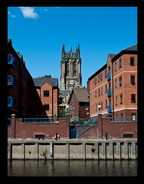 The wild, windswept moors which are the setting for Emily Bronte’s famous nineteenth century novel Wuthering Heights seem a world away from the smoke and grime of urban life — in fact, they are just up the road (about 15 kilometres) from Bradford!
The wild, windswept moors which are the setting for Emily Bronte’s famous nineteenth century novel Wuthering Heights seem a world away from the smoke and grime of urban life — in fact, they are just up the road (about 15 kilometres) from Bradford!
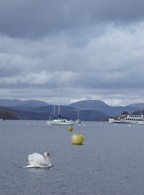 Further away from the main industrial areas, the north of England is sparsely populated. In the north-western corner of the country is the Lake District. The Romantic poets Wordsworth, Coleridge and Southey (the ‘Lake Poets’) lived here and wrote about its beauty. It is the favorite destination of people who enjoy walking holidays and the whole area is classified as a National Park (the largest in England).
Further away from the main industrial areas, the north of England is sparsely populated. In the north-western corner of the country is the Lake District. The Romantic poets Wordsworth, Coleridge and Southey (the ‘Lake Poets’) lived here and wrote about its beauty. It is the favorite destination of people who enjoy walking holidays and the whole area is classified as a National Park (the largest in England).
 Top
Top
Scotland
Scotland has three fairly clearly marked regions. Just north of the border with England are the southern uplands, which consists of small towns, quite far apart from each other, whose economy depends to a large extent on sheep farming. Further north, there is the central plain. 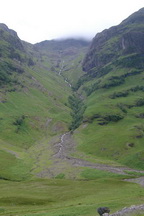 Finally, there are the highlands, consisting of mountains and deep valleys and including numerous small islands off the west coast. An area of spectacular natural beauty, it occupies the same land area as southern England but fewer than a million people live there. Tourism is important in the local economy, and so is the production of whisky. (Ugly Bug Ball)
Finally, there are the highlands, consisting of mountains and deep valleys and including numerous small islands off the west coast. An area of spectacular natural beauty, it occupies the same land area as southern England but fewer than a million people live there. Tourism is important in the local economy, and so is the production of whisky. (Ugly Bug Ball)
It is in the central plain and the strip of east coast extending northwards from it that more than 80% of the population of Scotland lives. In the late twentieth century, this region had many of the same difficulties as the industrial north of England, although the North sea oil industry helped to keep unemployment down. (SAD)
heritage n.
A country's heritage is all the qualities, traditions, or features of life there that have continued over many years and have been passed on from one generation to another. 遗产, 继承物,传统
|
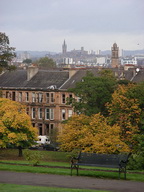 Scotland’s two major cities have very different reputations. Glasgow, the lager of the two, is associated with heavy industry and some of the worst housing conditions in Britain (the district called the Gorbals, although now rebuilt, was famous in this respect). However, this image is one-sided. Glasgow has a strong artistic heritage. At the turn of the last century the work of the Glasgow School (led by Charles Rennie Mackintosh) put the city at the forefront of European design and architecture. In 1990, it was the European City of Culture. Over the centuries, Glasgow has received many immigrants from Ireland and in it there is an echo of the same divisions in the community that exist in Northern Ireland (see chapter 4). For example, of its two famous rival football teams, one is Catholic (Celtic) and the other is Protestant (Rangers).
Scotland’s two major cities have very different reputations. Glasgow, the lager of the two, is associated with heavy industry and some of the worst housing conditions in Britain (the district called the Gorbals, although now rebuilt, was famous in this respect). However, this image is one-sided. Glasgow has a strong artistic heritage. At the turn of the last century the work of the Glasgow School (led by Charles Rennie Mackintosh) put the city at the forefront of European design and architecture. In 1990, it was the European City of Culture. Over the centuries, Glasgow has received many immigrants from Ireland and in it there is an echo of the same divisions in the community that exist in Northern Ireland (see chapter 4). For example, of its two famous rival football teams, one is Catholic (Celtic) and the other is Protestant (Rangers).
topography n.
The topography of a particular area is its physical shape, including its hills, valleys, and rivers. 地形,地貌,地势
|
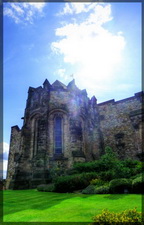 Edinburgh, which is smaller than Glasgow, has a comparatively middle-class image (although class differences between the two cities are not really very great). It is the capital of Scotland and the seat of its parliament9It is associated with scholarship, the law, and administration. This reputation, together with its many fine historic buildings, and also perhaps its topography (a rock in the middle of the city on which stands the castle) has led to its being called ‘the Athens of the north’. The annual Edinburgh Festival of the Arts is internationally famous.
Edinburgh, which is smaller than Glasgow, has a comparatively middle-class image (although class differences between the two cities are not really very great). It is the capital of Scotland and the seat of its parliament9It is associated with scholarship, the law, and administration. This reputation, together with its many fine historic buildings, and also perhaps its topography (a rock in the middle of the city on which stands the castle) has led to its being called ‘the Athens of the north’. The annual Edinburgh Festival of the Arts is internationally famous.
 Top
Top
Wales
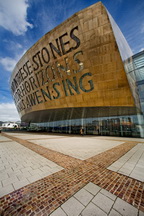 As in Scotland, most people in Wales live in one small part of it. In the Welsh case, it is the south-east of the country that is most heavily populated. As we have seen, coal has been mined in many parts of Britain, but just as British people would locate the prototype factory of the industrial revolution in the north of England, so they would locate its prototype coal mine in south Wales. Despite its industry, no really large citied have emerged in this area (Cardiff, the capital of Wales, has a population of about a third of a million). It is the only part of Britain with a high proportion of industrial villages. Coal mining in south Wales has now almost entirely ceased and, as elsewhere, the transition to other forms of employment has been slow and painful.
As in Scotland, most people in Wales live in one small part of it. In the Welsh case, it is the south-east of the country that is most heavily populated. As we have seen, coal has been mined in many parts of Britain, but just as British people would locate the prototype factory of the industrial revolution in the north of England, so they would locate its prototype coal mine in south Wales. Despite its industry, no really large citied have emerged in this area (Cardiff, the capital of Wales, has a population of about a third of a million). It is the only part of Britain with a high proportion of industrial villages. Coal mining in south Wales has now almost entirely ceased and, as elsewhere, the transition to other forms of employment has been slow and painful.
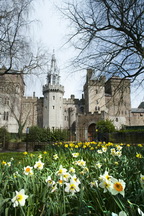 Most of the rest of Wales is mountainous. Because of this, travel between south and north is very difficult. As a result, each part of Wales has closer contact with its neighboring part of England than it does with other parts of Wales: the north with Liverpool, and mid-Wales with the English West Midlands10. The area around Mount Snowdon in the north-west of the country is very beautiful and is the largest National Park in Britain.
Most of the rest of Wales is mountainous. Because of this, travel between south and north is very difficult. As a result, each part of Wales has closer contact with its neighboring part of England than it does with other parts of Wales: the north with Liverpool, and mid-Wales with the English West Midlands10. The area around Mount Snowdon in the north-west of the country is very beautiful and is the largest National Park in Britain.
 Top
Top
Northern Ireland
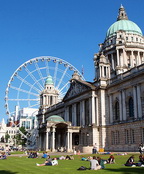 With the exception of Belfast, which is famous for the manufacture of linen (and is still a shipbuilding city), this region is, like the rest of Ireland, largely agricultural. It has several areas of spectacular natural beauty. One of these is the Giant’s Causeway on its north coast, so-called because the rocks in the area look like enormous stepping stones.
With the exception of Belfast, which is famous for the manufacture of linen (and is still a shipbuilding city), this region is, like the rest of Ireland, largely agricultural. It has several areas of spectacular natural beauty. One of these is the Giant’s Causeway on its north coast, so-called because the rocks in the area look like enormous stepping stones.
 Top
Top
 The climate in Britain is more or less the same as that of the north-western part of the European mainland. The popular belief that it rains all the time in Britain is simply not true. The image of a wet, foggy land was created two thousand years ago by the invading Romans and was perpetuated in the twentieth century by Hollywood. In fact, London gets no more rain in a year than most other major European cities, and less than some2
The climate in Britain is more or less the same as that of the north-western part of the European mainland. The popular belief that it rains all the time in Britain is simply not true. The image of a wet, foggy land was created two thousand years ago by the invading Romans and was perpetuated in the twentieth century by Hollywood. In fact, London gets no more rain in a year than most other major European cities, and less than some2

























